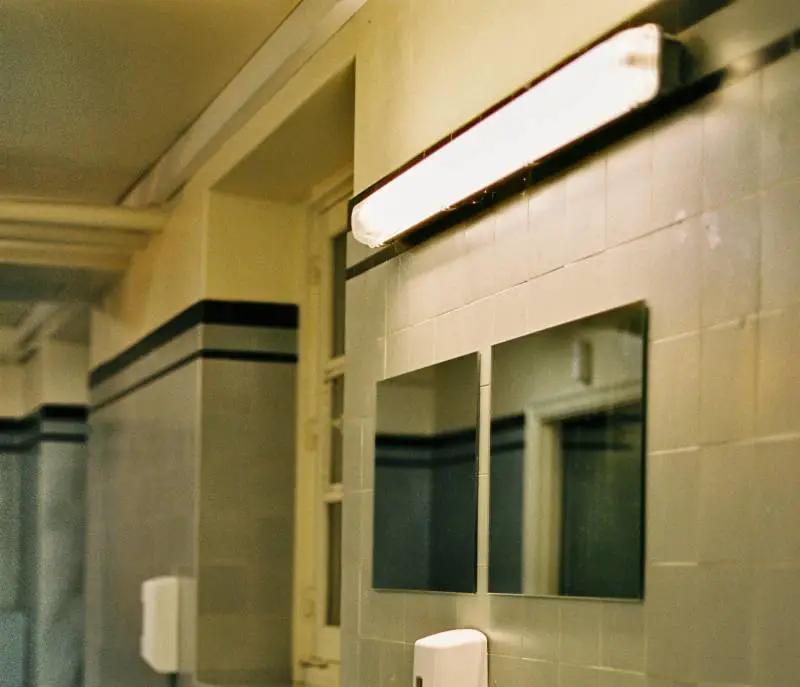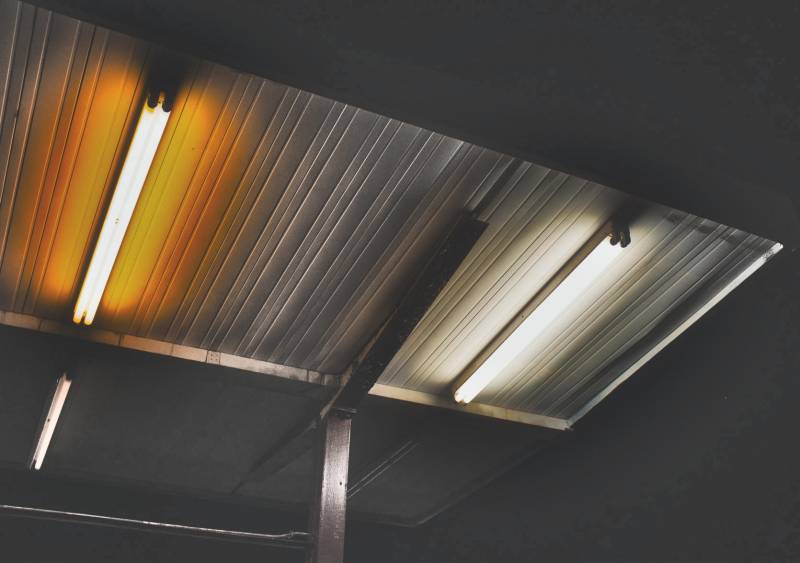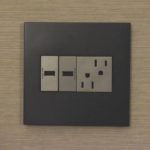Table of Contents
The flickering of fluorescent lights is not only a headache-inducing nuisance; it is also a serious problem that needs to be corrected with haste.

Several circumstances could result in flickering, and they will all be discussed in this article. You can also expect to get tips on repairing the flickering in situations when the problem is minor.
Causes Of Flickering Fluorescent Lights
Why do my fluorescent lights flicker when I turn them on or off? What makes my fluorescent bulb blink during usage? These are popular questions among fluorescent lighting system users.
The flickering is usually an indication of a problem with the bulb’s ability to produce light, and the bulb should be given immediate attention to prevent further complications.
The six main reasons for flickering fluorescent lights are:
1. Bad Bulbs
This is often the culprit when fluorescent lights start to flicker. This is because the other components of a fluorescent lighting system have longer lifespans than bulbs. It is pretty easy to identify a defective bulb as flickering is only one of many visible signs.
The bulb would also buzz and dim before finally dying. Another sign of a bad bulb is the appearance of dark spots at the end of the tube.
To confirm the condition of the fluorescent bulb, uninstall it from its old fixture and install it in a fixture that is known to work perfectly. If the fluorescent lights continue to flicker, then the problem lies with the bulb.
Blackened ends occur when the bulb is near the end of its life. After the coloration, it doesn’t take long for the bulb to stop working.
Replace the bulbs immediately they start to blacken and flicker, as the flickering would affect the function of the starters and ballast. Do this carefully as the blackened ends are mercury deposits, and inhaling them would be bad for your health.
2. Cold Temperature
Fluorescent lights are sensitive to temperature changes. The tubes produce visible light by passing electric currents through ionized gas.
The gases are a mix of mercury vapor and argon, neon, krypton, or xenon, and they require certain conditions to produce light. Mercury vapor condenses at the coldest spot in the bulb, making stable temperature a necessary condition for proper ionization.
The bulb’s wall is designed to keep the gases contained at an optimum temperature of 40°C, but when exposed to temperatures below 20°C, the lights will flicker and have poor output.
Suppose you think this a possible reason for your flickering light bulb. In that case, you can stabilize it by providing a warm covering for the bulb.
At temperatures higher than 45°C, fluorescent bulbs also start to flicker. However, the possibility of this happening is much lower than that of cold temperature.
3. Faulty Ballast
Fluorescent lighting systems use ballasts to regulate current flow into lamps and produce the voltage required for the lamp to start. Without ballasts, fluorescent bulbs would consume excessive power.
As the ballast directly receives the current and is responsible for transmitting it to the bulb, a faulty ballast would result in flickering lights. After flickering for some time, the bulb would eventually burn out. Hence this is a serious issue that needs to be addressed immediately.
A ballast typically lasts about 20 years, but cold temperatures and moisture significantly reduce the life span. To know if your ballast is responsible for the flickering of your fluorescent lights, perform the following.
- Check the fixtures for burn marks and swollen casing. Leaking oils are also signs of a faulty ballast in old fluorescents.
- Replace your old bulbs with new ones. If they also flicker or fail to turn on, the ballast is 9 out of 10 times the culprit.
- To further confirm the status of your fixture’s ballast, test it with a multimeter. The device measures the electric current, resistance, and voltage and with an inbuilt voltameter and ohmmeter. Connect one of the multimeter probes to the hot wire of the ballast and the other probe to the neutral wire. A reading of 1 and above imply that the ballast is not transmitting electrical currents correctly.
A faulty ballast allows current to flow directly into the lamp, which would uncontrollably increase the bulb’s output. If left alone, the bulb (old or new) and ballast would eventually overheat and fail. Replace the ballast immediately and enjoy the benefits of a fully illuminated room.
4. Faulty Starter
Fluorescent starters are small, metallic cylinders present at the end of a fluorescent tube. They connect the tube to the fixture or sockets. A defective starter causes fluorescent lights to flicker when turned on.

The initial flickering eventually stabilizes, but the light continues to flicker periodically until it is turned off.
Not all fluorescent lights use starters, and if your fixture is less than 20 years old, it probably doesn’t have one. However, if your fixture uses a starter, you can confirm if it is responsible for your flickering lights by carrying out the following steps.
- Uninstall the bulb from the fixture.
- Locate the starter and replace it with a new one. This is done by pressing in the old starter and turning it anticlockwise.
- Reinstall the bulbs and switch on the lights.
If the bulbs turn on without flickering, then the old starter was faulty.
5. Voltage Variations And Bad Wiring
Sometimes the flickering of fluorescent lights has nothing to do with the fluorescent lighting system. Poor electrical connections and faulty switches affect the bulbs and also cause flickering. Usually, this type of problem requires consulting an electrical specialist.
Poor electrical connections would affect other electrical appliances in the house. Your bulb’s flickering may be the earliest sign of the issue.
The wiring connections of the house have to be checked, and the electrician would correct the problem by tracing the circuit to the loose connector. Once fixed, your bulbs should turn on normally.
Also, variations in the voltage delivered to the bulbs would result in flickering. Fluorescent tubes work by converting electrical energy into visible light, and if the energy provided isn’t consistent, the light produced would also vary in intensity.
6. Poor Installation Or Faulty Bulb Connector
This is a less common reason for the flickering of light bulbs. It is also one of the easiest to correct as it requires minimal technical knowledge.
When a fluorescent bulb shifts or is improperly installed, the resulting electrical contact is insufficient to produce optimal light output. You can correct this by reinstalling the light bulb and rotating it 45° in both directions to lock it in place.
Similarly, if the connector end of the bulb is loose or damaged, it may affect the bulb’s output and lead to flickering. It is impossible to repair the connector, so a replacement bulb would need to be purchased if this is the case.
Conclusion
Once your fluorescent lights begin to flicker, it is a sign that something is going wrong with the lighting system. If the problem isn’t addressed, it will lead to more severe complications.
Therefore, you need to contact an electrician immediately to correct the issue or personally carry out an investigation of the system and make the necessary replacements.



![Why Is My Standing Fan Making Noise? [Top Reasons] Why Is My Standing Fan Making Noise? [Top Reasons]](https://homesteadandprepper.com/wp-content/uploads/2021/10/Why-Is-My-Standing-Fan-Making-Noise-150x150.jpg)




